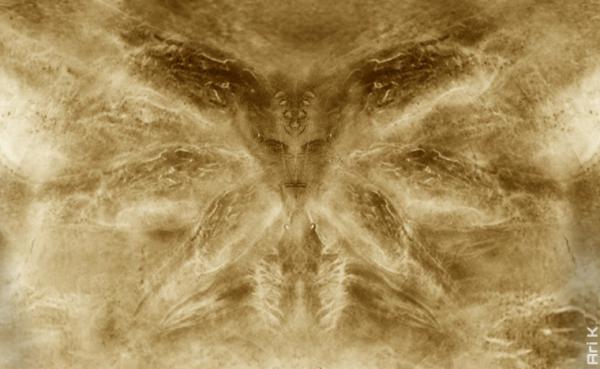BY LETTER
Transhumanism
Culture and Society > Metaphysics > Philosophy
Sophonts > Transapients > Postbiont (Po)
Sophonts > Transapients
Sophonts > Transapients > Postbiont (Po)
Sophonts > Transapients
Transhumanism is less a religion or even a philosophy than a general outlook on life. However, it has been the basis of a great many religions, philosophies, and ideologies, at least during the late Information, Interplanetary, and early Federation periods. Transhumanism is the view that humans can and should strive to become more than they currently are, using technological means. An outgrowth of the humanist movement that became popular in the first part of the 21st century c.e.. While having only a relatively mild impact on Earth, especially among the great masses of digitally illiterate and half-literate "proles", it became very popular among the educated and the employed, who could afford the necessary enhancements, and it also established itself in the orbital biospheres and other colonies of the Interplanetary Age, and was carried with the colonists to the nearby star systems. In each of these biospheres and colonies Transhumanism developed in different directions, as part of the overall cladisation of the human race itself. And in almost all cases it became subsumed into the mainstream; human enhancements soon came to be accepted as natural on many worlds.
Image from Steve Bowers |
The most noticeable transhumanist groups developed were the Extropian League and the Metahuman Association on the early O'Neill Orbitals, and the Technophilic Guild and Transhumanist Foundation of the later Cislunar Alliance, as well as innumerable venture capitalists and some of the bigger megacorporations like GeneTEK and Neotek and the corporate culture that developed on Mars about this time, the Gengineer Republic among the so-called shapers, who placed a great emphasis on somatic engineering, the bionicist subcultures (which cherish bionic enhancements for their own sake) and the Next Step Foundation (an organisation attempting to find ways to upload human minds into computers) on Nova Terra, Atlantis (several associations, many tied to TRI and various R&D corporations), New America (mostly technorat work on adapting to space) and Penglai (the underground Xian movement which seeks to develop radical enhancements; suppressed by the authorities). On Arcadia a mild and biological form transhumanism could be said to be the mainstream philosophy. The Tiplerites believed intelligent life must rise to gain control over the entire physical universe, in order to redesign it to enable infinite information processing and survival; they later amalgamated with the Shining Engineers Vector with which they had a number of points in common. Many of the First Federation megacorporations were driven by transhumanist ideals, especially the nanotech and biotech megacorporations that drove so much of the early expansion into deep space.
By the Consolidation Age Transhumanism was considered tame and old hat, accepted as an obvious empirical corollary of any advanced technological society, and hated and reviled by the extremist luddite and religious factions (many of which also had a strong dislike for elements of pure science such as Evolution theory and Exopsychology).
Another reason of course that transhumanism "died out" was that it had achieved its objectives - in the Consolidation Age it was well understood how a baseline could be extended to transhumanity, and using cyborgisation and mind-linking with AI become posthuman. The edge had moved beyond humanity, and the corresponding AI transapientism had led to the transcendent archailect gods. Those willing to develop themselves in the extreme had by now done so, and the new generations of transhumanists would follow other directions.
Related Articles
- Extropia - Text by M. Alan Kazlev
[1] Interlinked Information to First Federation age evolving communities embodying extropian values. Included both virtual cultural communities and actual communities in several orbital free zones.
[2] Belt habitat of Extropist sect, Interplanetary Age to Solsys Golden Age. - Extropian - Text by Anders Sandberg based on the term in his Transhumanist Terminology
One who affirms the values and attitudes codified and expressed in the Extropian Principles. - Extropian Principles - Text by M. Alan Kazlev
The five values of Boundless Expansion, Self-Transformation, Dynamic Optimism, Intelligent Technology, and Spontaneous Order, which form the basis of the extropian memeticity. - Extropism (religion) - Text by M. Alan Kazlev
Interplanetary Age religion, an extension of extropist philosophy, based on rigid application of Extropian Principles. After opposition increased in the 400s AT, its leaders enforced selective isolation of the community in the Belt habitat Extropia. The habitat, along with the few remaining members of the sect, was destroyed in the Technocalypse in 566 AT. - Extropolis - Text by Anders Sandberg
Extropian community located in Cislunar orbit, late Information to Interplanetary period. - Extropy - Text by Anders Sandberg in his Transhumanist Terminology
A measure of intelligence, information, energy, life, experience, diversity, opportunity, and growth. The collection of forces which oppose entropy. See also Negentropism - Transhuman
Appears in Topics
Development Notes
Text by Anders Sandberg
Initially published on 28 September 2003.
Initially published on 28 September 2003.







